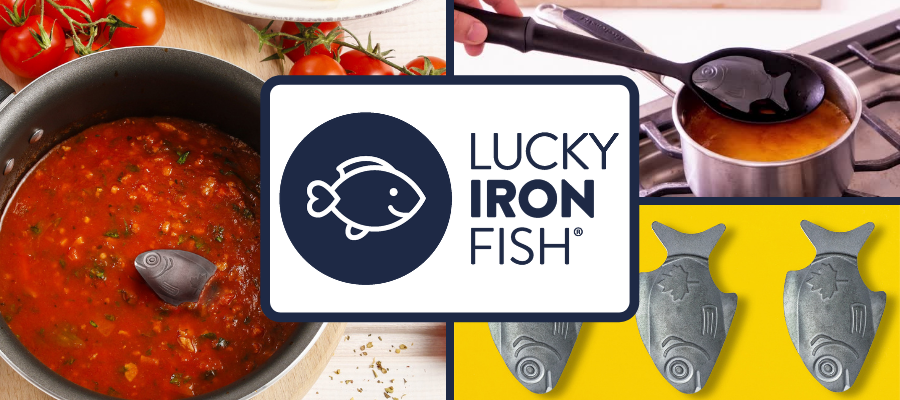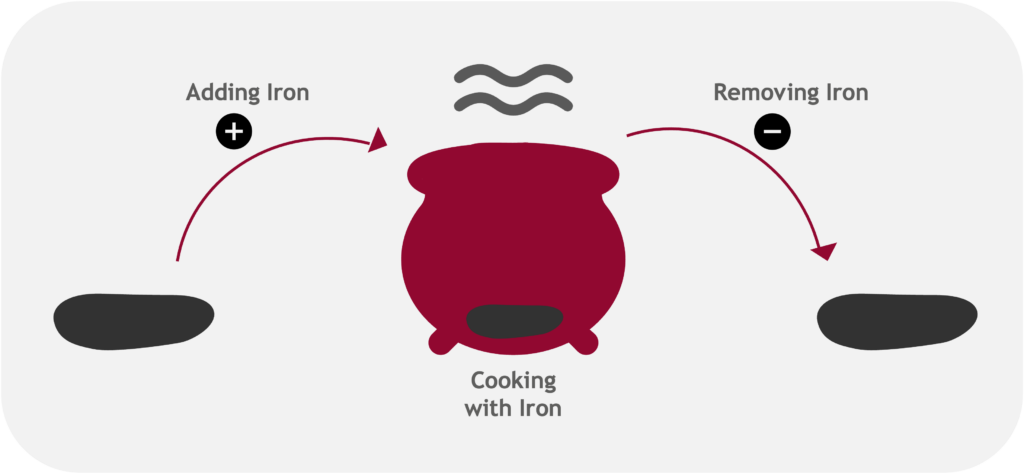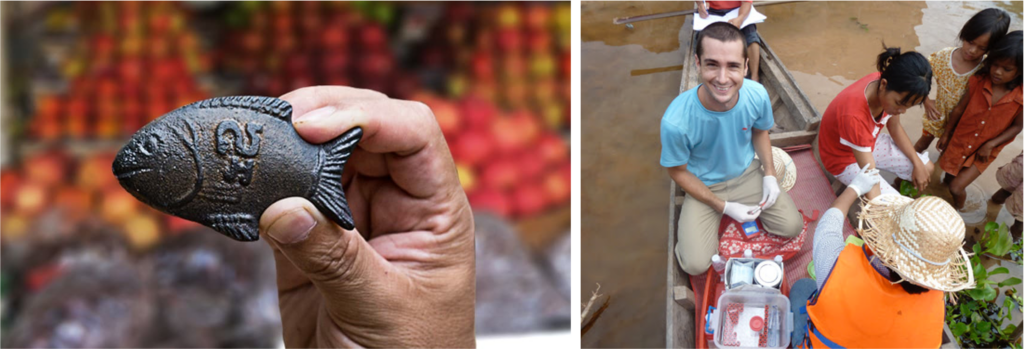
The Problem
“How designing something into the shape of an animal improved human health”. The story of Lucky Iron Fish began in 2012 when epidemiologist Christopher Charles traveled to Cambodia. He wanted to investigate one of the major global health problems: Anemia. This is a disease in which the number of red blood cells is too low. Charles himself describes his motivation: „I’ve always loved public health and trying to help populations of people.”
Anemia symptoms include decreased energy capacity, which harms both private life and work. Furthermore, anemia is particularly common in young women and leads to heavy bleeding during childbirth, which can have serious consequences. In addition, the disease is also transmitted to newborns and leads to increased susceptibility to infection, as well as deficits in mental and physical development in children.
During Charles’ time, the number of people affected by anemia was over 2 billion, highlighting the disease’s relevance. Charles conducted a study where he collected blood samples of people living in villages in Cambodia. He found that the national estimates of affected people were far exceeded. The affected people had very low energy levels, making it difficult for them to work. Children are especially vulnerable to this disease as iron is essential for the development of the brain and body. Children who suffered from anemia had difficulty concentrating in school, which affected their ability to learn and impacted their future.
The standard treatment for anemia is iron supplements, which can be taken as pills or powders. However, these are expensive, and, especially in developing countries, many people who need them cannot afford them. In addition, Charles speaks of many side effects. As a result, the supplements are often not taken continuously. He, therefore, asked himself the question: How can a treatment for anemia be made accessible to people in Cambodia? The solution must be affordable and easily accessible, even in rural areas.

The Solution
He followed the design thinking approach to find a solution that would make it easy to ingest iron. After researching, he discovered that iron can be taken in via soup or boiling water cooked in an iron pot. The iron from the pot then leaches into the food and fortifies each meal. He thought this would be a great treatment option because people wouldn’t need to take any supplements, and they could eat the food cooked in iron pots. However, he soon realized that iron pots were too heavy and expensive for the villagers. He also found that people often left leftover food in the pot to eat the next day, but keeping food in iron pots for a long time could spoil the food. So, he discarded the idea of using iron pots to solve the problem. He continued the ideation phase, and his next idea revolved around the thought that the iron had to be added to the iron pot but afterward needed to be removed. The idea was that this piece could be added to any cooking device, from steel to aluminum. It had to be cheap and effective at releasing iron and should be environmentally sustainable.

Prototyping and Testing
He prototyped early to get direct feedback on what worked and what didn’t, saving time on unuseful ideas. His first draft was a plain iron bar. It did tick all his boxes. It was cheap and effective in releasing iron. However, the Cambodian families did not integrate this bar of iron into their food. They did not want to put it into their soups and water and rather used it for everything else, like as a door stopper or as a paperweight.
Charles redesigned the iron bar into an iron disc, which he thought looked better. However, the villagers still did not understand why it should be put into their pots. While staying in Cambodia, Charles observed the people and wondered about their values. He noticed the frequent appearance of the lotus flower symbol, which he learned was associated with Buddhist scriptures and spirituality. As a result, he designed a third prototype in the shape of a lotus flower. Although the people appreciated the design, they failed to see how it was relevant to their food, as the connection was still unclear.

Charles spent more time observing the people around him and noticed that fish played an essential role in their daily lives. Many earned their livelihoods through fishing and consumed fish with nearly every meal. With this insight, Charles decided to create his iron device in the shape of a fish. He experimented with various fish shapes until he settled on one. He added a cartoon-like smile to make it look friendlier. After several iterations, he finally created the lucky iron fish that the villagers accepted.
The success of the project can be attributed to the fish’s strong connection to the villagers’ way of life and the association of fish with good luck in Cambodia. The key to solving the problem was understanding people’s needs and habits. Charles recognized that scientists often work in isolation in their labs and may forget why and for whom they are developing solutions and how those solutions impact people’s lives. Therefore, he knew it was essential to live among the people he aimed to help, get to know them and their lifestyles, and develop a convenient solution.
For the testing phase of the Design Thinking process, Charles made sure that the iron fish did not contain any heavy metal contaminants. He also closely investigated how much iron the fish actually released into the water or soup they were put in. His results showed that by consuming 1 liter of water or soup a day, a person could meet 75% of his iron requirements. Charles knew this solution was very effective. But still, the question remained: Would people actually use it?

The Result
Many great solutions fail due to the fact that foreign people think they know what’s best for the people and try to push a solution on people that is not made for them. They additionally often fail due to high costs and because they are technically too complex.
The Lucky Iron Fish, however, did succeed in Cambodia, and people actually used it. In the testing phase, 400 samples were distributed to 5 different villages, and Charles observed the people closely and asked them to use the fish daily for cooking. He took blood samples in the beginning and after three months to find out if the fish had any impact on the iron level in the people’s bodies. As a result, Charles observed that over 90% used the lucky iron fish, and there was a two-fold reduction in the prevalence of anemia. People had more energy, not as many headaches, and did not feel dizzy anymore. Mothers told him that children were growing up happier, healthier, and stronger. The fish were produced locally with available scrap iron, essentially old car parts. Local production also created new workplaces in Cambodia. Today, the iron fish is produced on a mass scale, and the project has spread worldwide. To ensure that people in severely affected countries learn about the project, the company works with many organizations and locals to talk in villages about nutrition, anemia, and all the symptoms that can be resolved by iron intake. However, there is also criticism that iron deficiency is not the only cause of anemia; genetic defects can also lead to it, so the Lucky Iron Fish could not help here. It can, therefore, be said that there is no single solution for anemia, but this project is a starting point.
Conclusion and Learnings
To sum it up, a successful design thinking approach requires a deep understanding of the customers or target group. It’s important to know what their daily life and reality look like, how they behave, and what they truly need. Charles understood this and realized that in order to create a meaningful innovation that would actually be used, he had to understand the people. He also recognized that by hiring locals who lived in the community and had the people’s trust, the Lucky Iron Fish could succeed and improve the health of thousands of people.
Sources
World Health Organization. Anaemia. Retrieved April 1, 2024, from: https://www.who.int/health-topics/anaemia#tab=tab_1
BRIGHT Magazine (2018, August 30). Has the Iron Fish’s Luck Run Out? Medium. Retrieved April 1, 2024,
from: https://brightthemag.com/lucky-iron-fish-raise-questions-about-how-best-to-address-anemia-cambodia-d65bd66cf228
Dr. Christopher Charles (2014, July 08). How one lucky iron fish can treat anemia. TEDx Talks, YouTube. Retrieved April 2, 2024, from: https://www.youtube.com/watch?v=0Lf6glgKt3Q
Canadian Medical Association (2024). Dr. Christopher Charles. Retrieved March 25, 2024, from: https://www.cma.ca/get-involved/awards/awards-young-leaders/dr-christopher-charles



